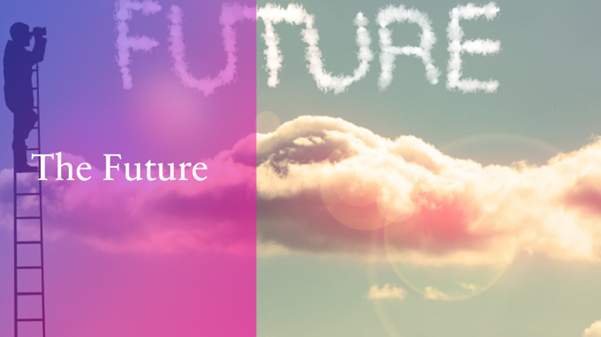Karyn Williamson is a Digital Preservation Analyst at the Digital Preservation Coalition.
I was lucky enough to be asked to give the Keynote address at the Community Archives and Heritage Group (CAHG) Conference at University College London on the 10th of July 2024. I’ve been working on the Our Heritage Our Stories project since March and it’s given me the opportunity to work with a wide range of community archive groups and learn about what they need and the experiences they have had when contacting or working with established archives across our sector. This experience is what led to the thoughts and opinions in this blog, which are mine alone. I wanted to share this to encourage record keepers to think about their current practice when working with community groups and if this could be improved. This keynote has been slightly edited into this blog.

As the title of my talk suggests, I believe we need to find a balance between preserving community content, and collaborating with the creators of this content, no matter who they are, or where they are based, in a way that best supports them (well, all of you.) This is not a new or radical viewpoint, as evidenced by CAHG’s own Andrew Flinn as early as 2007 when he wrote – “We all, professional and non-professionals need to find a way of ensuring that these community archives are preserved and not lost through our neglect.”
Looking back at my time working in the profession, I do not think this has always been the case, and I am still not entirely sure that we are there yet. But I do have hope for the future, particularly in a digital context. But before I get to that, I am going to go back to the start – more specifically, when I started.
I qualified as an Archivist in 2013, and I think that I joined a sector where good practice in terms of collaboration between institutional archives and community archives was in short supply. Archivists saw themselves in many ways as the keepers of records and the general feeling was that no one outside of the sector should be collecting and preserving history as the only way to do it right was in an archive repository. Access was not always a straightforward process and many archive users were frustrated at not being able to access records because they had not yet been reviewed or processed. And this affected community archives because collaboration was difficult for those who wanted it. Archivists were happy to take in and store the collections that those working with community archives had collected, despite having no resources to catalogue or make them available. And communication between community groups and organisational archives was sporadic at best, with those who did donate their collections given no information about when it would be processed or made accessible and those who chose not to donate were told there was no support available at all. Apple Harrison made this clear in 2021 when she stated, “Though the archive field is fraught with vocational awe and a desire to see our work as socially empowering and inherently good, we are at best benevolent eulogisers”.
This was not a good situation for many reasons and led to a lot of distrust between archive institutions and grass roots community groups who had been working for years to preserve their histories and to tell their own stories. This sounds like I am bashing on my own sector, and I do remember at the time thinking that the way we were working was not quite right.
But context in these situations is important, and as I became more involved in the sector, I realised that we were climbing mountains of our own. Of the 3 big heritage institutions – Libraries, Museums, and Archives -archives by far were the least known, in many cases, completely unknown. This was certainly the case in the UK when the Museum, Libraries and Archive Council, whose remit was to promote improvement and innovation in museums, libraries and archives, controlled funding to these sectors. During this time, a lot of funding was allocated to the museum sector. When the Council was disbanded and museums and libraries went under the remit of the Arts Council England, Archives became the responsibility of the UK National Archive sector so although our national body now controlled our funding, no concrete plan was in place for how this would be distributed. As with any change in ownership. These things take time.
Sector funding was rock bottom, and resources were spread so thinly they were almost translucent. With no funding to focus on their collections and no resources available to process them, archivists did what they thought was the best thing to do. Collect everything, keep it safe in a repository and hope that one day the tides would turn, and we would have time or resource to catalogue and make available the records we had collected.
And then the digital evolution happened.

And although we all knew it was coming, though we had watched phones change and computers evolve and Floppy discs and CDS change to Hard Drives and USB sticks, very very few of us had planned or researched this change that was going to take over our lives. Suddenly we had a whole new skillset to learn, with even more records in even more formats and even more work alongside the sickening realisation that unlike with physical records, storage does not equal preservation. And the records and the work continued to pile up.
Community groups were feeling the same thing but worse. The training barely existed for those training via master’s courses, so passing any knowledge on was out of the question because we did not have it ourselves. Again, our solution was to offer to collect on the same, misguided, but honest principle that we would have time to process the content, one day.
Then, the pandemic happened.
Suddenly we had all the time in the world. Everyone was inside and so with no exhibition work, outreach, or reader access, we had time to enhance catalogue data and catalogue records, and even work on digital records – but then reality set in. We realised; it was not enough. We were all holding on for this magical gift of time that would help us process our collections. But now time was all we had, and it had become clear that the ratio of people to record processing work was so large, we had no way of getting through it all. To this day, we still no way of completing it all.
And the digitisation boom was in full force by this point, particularly across community archives with substantial amounts of records being digitised and made available online. An important practice in terms of providing access that continues today. However, no thought was being given to the preservation of these records, as shown by the statistic that of all the websites created using community archive content as part of the WW1 centenary celebrations in 2017, over 60% are no longer available online with a similar percentage of the created records no longer available at all.

Another change in the global landscape was the much-needed change in thinking around diversity and inclusion. And I think this movement was instrumental in changing the viewpoint of those working in the archive sector. A wide range of different community groups, from those centred on the place they live, to LGBTQ + groups or those who collect records around a particular event, such as a gala day or a film festival, have become more vocal about being the best people to preserve their own history and tell their own stories. And quite rightly so. And this made archivists reflect on previous practice. Maybe, we were not always the best people to be preserving records and telling these stories. Maybe, the theory and practice we had been following since the 1920’s was actually making us gatekeepers - and unrestricted access, collaboration and support was the way forward. It should be said that there has always been a subset of archivists who thought this way, but it was not widespread, and it is only more recently that the tide has begun to turn in favour of a new, more inclusive approach.
So why am I telling you all this?

It is important that I set the scene and what came first before I talk about where we are today – because I think we are at a crossroads now and the decisions that we make now will have a significant impact on how we move forward as a sector. These decisions will also have ramifications for the community archive sector, and I am deliberately separating the archive and the community archive sector at the moment because I believe that currently they are separate. I think this is a problem and I think how we respond now can make things better for everyone. Or it will keep us in the same place we are now.
Where are we now?
I’m happy to say I think we have come a long way since I joined the profession. Particularly in terms of collaboration between professional archivists and community archives. Organisations such as PRONI (Public Record Office of Northern Ireland) and Glasgow Women’s Library are showing what can be achieved with communication, respect, and a change in mindset. Many archivists have realised that community groups know far more about the content they are creating and working with than we ever will and working together is fast becoming a standard practice across the archives sector.
And this for me is where the crossroads is looming and it’s where the title of this talk comes from. Archivists working in local authorities and other institutions are focused on community content. Physical or digital, they know the value of the content being created and they want to work towards preserving it. However, I do not think we are fully at the stage yet where we are consistently providing the types of support that would make the communities we work with content. In many cases we still err on the side of, we will collect and preserve for you, and in some cases, this might be the best option. But we need to make more effort to have conversations with communities to find out what they, (you) want and how we can best support that. The existence of projects such as the Our Heritage, Our Stories program, are highlighting that this can be achieved, and the results are more beneficial for everyone involved than the ways in which we have previously worked. And practice is slowly changing. What has not changed is the fragility of the records in our care, particularly digital records.
It's important to note that the content we are now dealing with is far more fragile than it has ever been. We know as a sector how to deal with physical records because we have been doing it for years. But digital records are an entirely different beast.
Why are these records so fragile. One reason is the many misconceptions about digital records. For example, the idea that storage and preservation are one and the same, or that putting records on a website to provide access to them is the same as preserving them. The steps to preserve a record are far more complex than the removal of all metal, and packaging in acid free housing we do as a matter of course with physical records. The work to preserve digital records also continually changes as technology updates and evolves so staying in line with never mind ahead of this curve is a continual challenge.
In addition, many projects across the community archive sector have been funded by external funding bodies with the sole purpose of providing access to digitised records. While this is a worthy endeavour, little to no thought, and no funding has been given to ensure the long-term preservation of these records. So, what happens when the funding to pay for the website runs out? Or the person running the site moves on and doesn’t leave the log in information. Access to these important records is fantastic, but it needs to be given while considering and working towards record preservation.
Another reason is the sheer number of formats and the volume of records we are now dealing with.
The Digital Preservation Coalition are so worried about the fragility of some record types that we created The Bit List, a list of digital materials which are at risk of being lost and require immediate intervention to make sure these records are preserved for the future. Digital Records created by community archives are on this list and categorised as Critically Endangered, one step down from the highest risk category of Practically Extinct. Some comments from the jury who reviewed the list and decided on the categorisations, include,
“The loss of tools, data or services within this group would impact on people and sectors around the world.”
And most notably, that action is recommended within 12 months, detailed assessment is a priority, and challenges have remained specifically those of funding and sustainability.
But the main headline I took from the Jury comments is the worldwide impact that the loss of these records would have. Community Created digital content is fragile, but it is also, unique, and interesting and important and anyone with any interest at all in heritage and future access should be working together to help preserve this content.
Knowing what has come before, what will the future be like? Personally, I would like to see the institutional archive and the community archives sector collaborate in a range of ways.

I would like to see archivists at national, local, and special collections institutions take on more of a facilitation role. By this I mean archivists at these organisations should be working with community archives without preconceived ideas about what is best for the collections. Instead, focus should be on conversing and connecting with the groups and people creating this content to find out how they want to preserve it and helping them to do that. Whether that be a donation to an archive repository, or community groups, creating, managing, preserving and providing access to their records within their communities, or supporting community groups to list and describe their material for future archive donation, the focus should be on the needs of the community and how we can provide support in the right way when it is required. If we do take in collections from community groups, access should only be restricted by the repository opening hours with group members able to see their records, work on them or add to them as they please whether they have been catalogued or not.
I would also like to see less short term funded projects designed to make community archives accessible, but no thought given to record preservation. Funders have a responsibility to ensure that any projects they fund include provisions for the long-term preservation of the records created. Heritage is important and community archives are a huge part of our collective global memory. Sustained investment is required to ensure the records that tell our stories are preserved and remain accessible long after we as custodians have gone.
I would also like to see the complete eradication of the term ‘Best Practice.’ Best practice is a pipe dream for all but the best resourced and staffed organisations and the unachievable goals it sets puts many people off even starting because the mountain seems too steep to climb. In many cases, the absolute basics are enough and if you only have time to do one thing – Guidance from leading institutions should be clear on what that one thing is. Good practice, basic practice, the best that you can do practice – all are completely acceptable and the fact that many of you are doing anything at all on a volunteer basis is brilliant. Archive institutions should be supporting that as much as we can, and I hope in the future we will continue to do this.
To conclude, Community Archives are important, the work you do is important, and it will continue to grow in importance as time goes on. Collaboration and a United Archive sector is, for me, the best way forward and will provide the most sustainable way of preserving community content which I hope will in turn make for a very content archive community.



































































































































